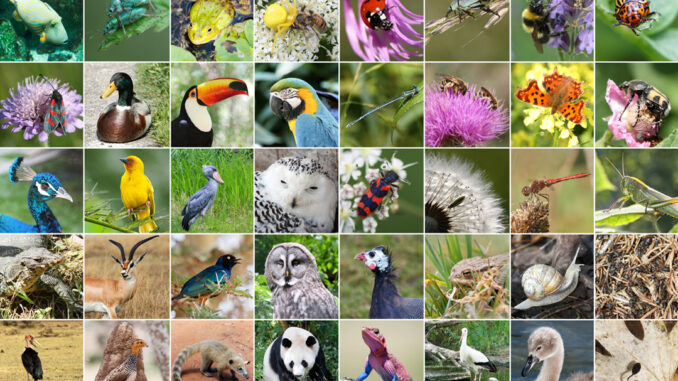
Biodiversity is a complex thing. So is studying the human aging process. And, to make matters even more complex, all of these things are constantly changing.
First off, what is biodiversity? Simply put, biodiversity is all of the different living things in one particular area. The biodiversity on earth is extremely varied and made up of millions of plants, animals and microbes such as bacteria. Having a healthy environment encourages these things to thrive and, in turn, creates beneficial ecosystems and economies as well as solutions for climate change.
Biodiversity can also contribute to human beings’ well-being. According to conservation.org, research indicates that there is a close link between disease outbreaks and the degradation of nature. Seventy per cent of emerging viral diseases have spread from animals to humans and, as the global wildlife trade continues and development projects expand deeper into tropical forests, humans are increasing their exposure to wild animals ─ along with the diseases which they may carry. A recent example of this is the COVID-19 pandemic, which they say can likely be sourced to a wild animal and fish market in Wuhan, China, demonstrating just how important it is to take care of nature in order to take care of ourselves.
Animalsaroundtheglobe.com cited that there is now a total of 41,415 species on the IUCN Red List, and 16,306 of these are endangered species threatened with extinction. This includes both plants and animals. Because biodiversity relies so heavily on the health and variety of such living things, having so many species which are suffering and even being completely eradicated is having a major impact on the quality of life on the earth all around us. This, ultimately, affects our health and our lifespans.
There is no doubt that biodiverse surroundings influence a human’s health – if surroundings are not beneficial, this will have a ripple effect on those cohabitating there. However, if the tables are turned, there’s something to be said about how longer-living humans are negatively impacting biodiversity. In fact, longevity is said to have several negative consequences on an environment’s ability to be biodiverse. In an article called Social-Ecological Predictors of Global Invasions and Extinctions ─ published several years ago ─ researchers examined the social, economic and ecological information of 100 countries to determine which factors are most strongly linked to endangered and invasive birds and mammals and, even though human life expectancy is rarely included in such studies, it turned out to be the best predictor of invasions and endangerment in these countries. “Increased life expectancy means that people live longer and affect the planet longer; each year is another year of carbon footprint, ecological footprint, use of natural resources, etc. The magnitude of this impact is increased as more people live longer,” they said (as cited on the Scientific American website). For example, New Zealand, Australia, Indonesia, the Philippines and the United States had the highest percentages of birds and mammals that are endangered and invasive, and these countries also rank among those with the longest human life expectancy.
The link between biodiversity and longevity is a tricky one and is something that is really a catch-22 situation: it seems that we need a healthy environment around us to live longer but, as we live longer, we in turn hurt the environment more. I guess all that we can do is strive to preserve both (biodiversity and our well-being) and work toward keeping things balanced.
